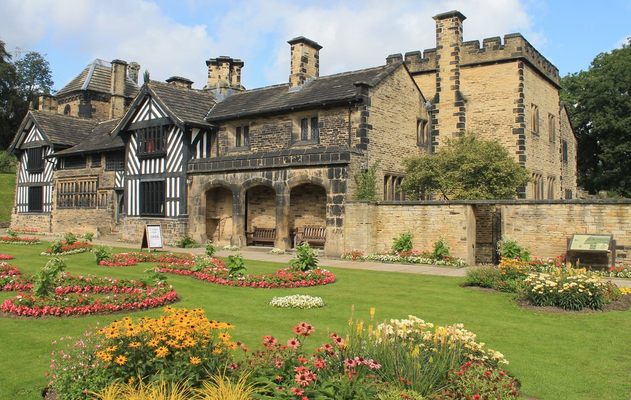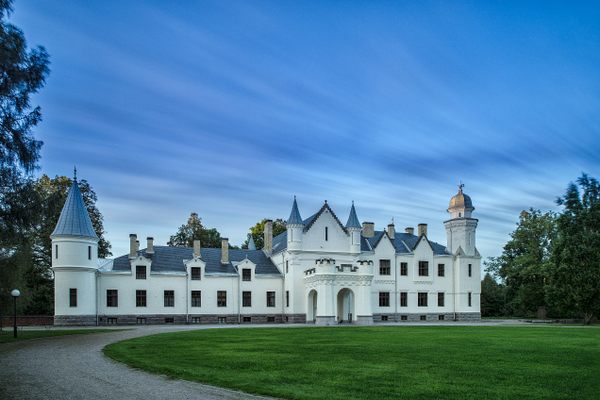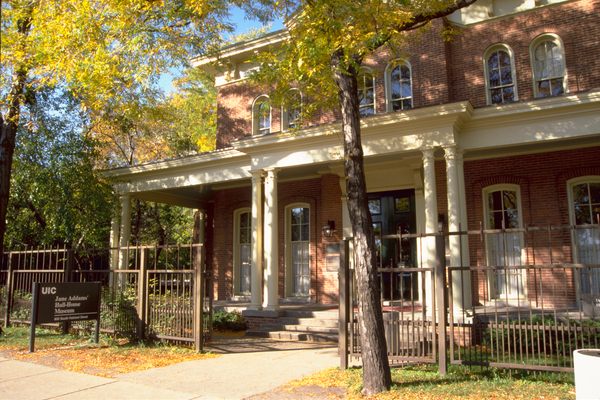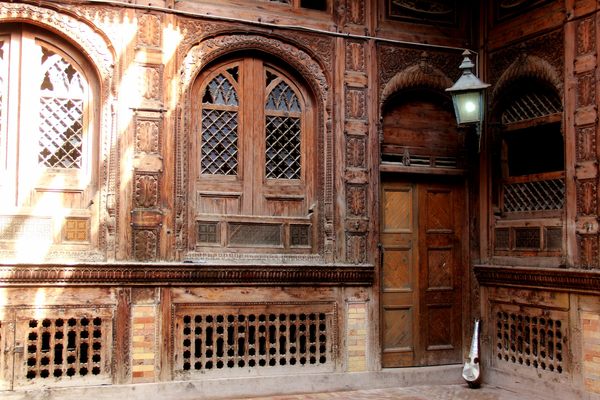About
Located just outside of Halifax, Shibden Hall is a half-timbered building that stands in the middle of Shibden Park. The building was constructed in 1420 and has been modified and renovated numerous times over the centuries. The mansion’s rooms are decorated and furnished in the styles of the 17th, 18th, and 19th centuries and display many of the items owned by the prior occupants. In many respects, Shibden Hall is very similar to many other medieval halls spread across England except for its association with one of the nineteenth century’s most prominent LGBTQ individuals.
In 1791, Anne Lister was born into the wealthy Lister family. As a teenager, Anne Lister discovered that she was more attracted to women than men, and during her lifetime, she would carry on many affairs with many other women. She preferred to dress entirely in black and generally looked unfeminine in terms of her appearance, prompting locals in Halifax to refer to her as "Gentleman Jack." Lister even exchanged "marriage" vows with two of her lovers, Mariana Lawton and Ann Walker.
Anne Lister also kept a lengthy, detailed diary throughout her life. Many parts of the diary are written in a code derived using Greek letters and algebraic symbols, and the passages describe detailed information about Lister’s encounters with other women. The information within these diaries provides quite revealing information on same-sex relationships in the 19th century. These diaries are what Anne Lister is best known for today.
In 1815, Anne Lister moved into Shibden Hall with her aunt and uncle. After her uncle’s death in 1826, she began to manage the estate herself. Ann Walker would join Lister at Shibden Hall in 1834. When her aunt and father died in 1836, Lister inherited all of her family’s wealth, including Shibden Hall, and she would make multiple modifications to the hall and the estate. Unfortunately, Lister passed away in 1840 while traveling in what is now the nation of Georgia.
Anne Lister’s diary lay within Shibden Hall for decades until they were discovered in the mid-1890s by John Lister, one of the descendants of the Lister family and the last resident of Shibden Hall. He and his friend Arthur Burrell read and decoded the diaries. However, John Lister was worried about the obscene material within the journal, and, because he was gay, he was particularly concerned about the attention that would be brought to himself if other people read the journals. So he hid them behind a wall panel within Shibden Hall.
After John Lister’s death in 1933, the building and its contents became the property of the local government. In the 1980s, the diaries were re-discovered in an archive by local historian Helena Whitbread, who re-decoded the text and then published it so that other people could learn about the extraordinary life of Anne Lister. The diaries are now recognized as a notable part of LGBT history, and both the diaries and Whitbread’s work have inspired documentaries and even a television series.
Shibden Hall is now recognized as a major LGBT landmark. Even though the displays within the hall present a broad, comprehensive view of the building’s history, Anne Lister is still a significant part of that history, and her life story is prominently highlighted within the museum.
Related Tags
Know Before You Go
Shibden Hall is open seven days a week between March 1 and October 31 every year. The hall is located within Shibden Park to the east of Halifax. The location is within a half-hour walk of the center of Halifax (including the train station), and the site can easily be reached by bus or car, with parking available near the hall. An admission fee is charged to visitors. Note that, unfortunately, only the ground floor is accessible to wheelchair users.
Community Contributors
Added By
Published
June 24, 2024
Sources
- https://www.york.ac.uk/borthwick/holdings/research-guides/lgbt/anne-lister/
- https://www.exploreyourarchive.org/anne-lister-the-secrets-out/
- https://www.annelister.co.uk/
- https://historicengland.org.uk/research/inclusive-heritage/lgbtq-heritage-project/love-and-intimacy/anne-lister-and-shibden-hall/
- https://museums.calderdale.gov.uk/famous-figures/anne-lister
- https://www.visitcalderdale.com/see-and-do/attractions/shibden-hall-estate/
- https://museums.calderdale.gov.uk/visit/shibden-hall

























